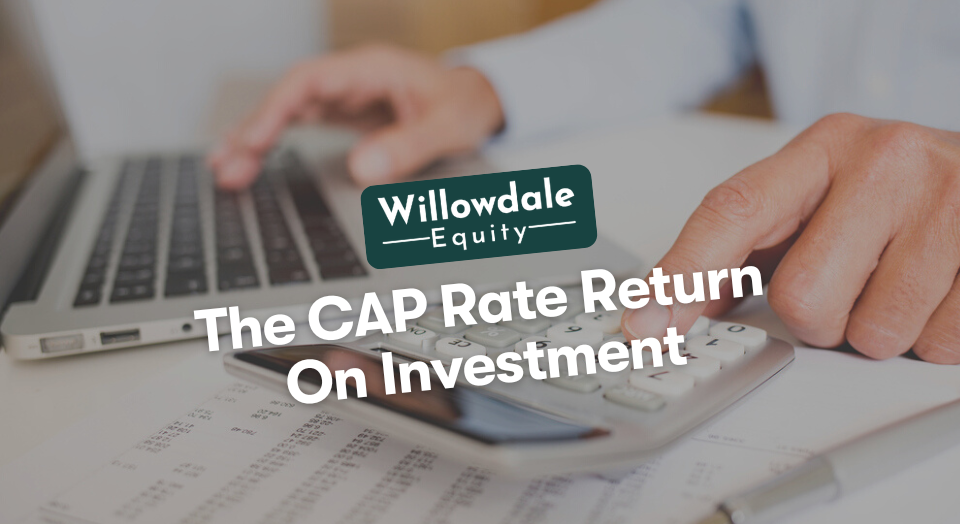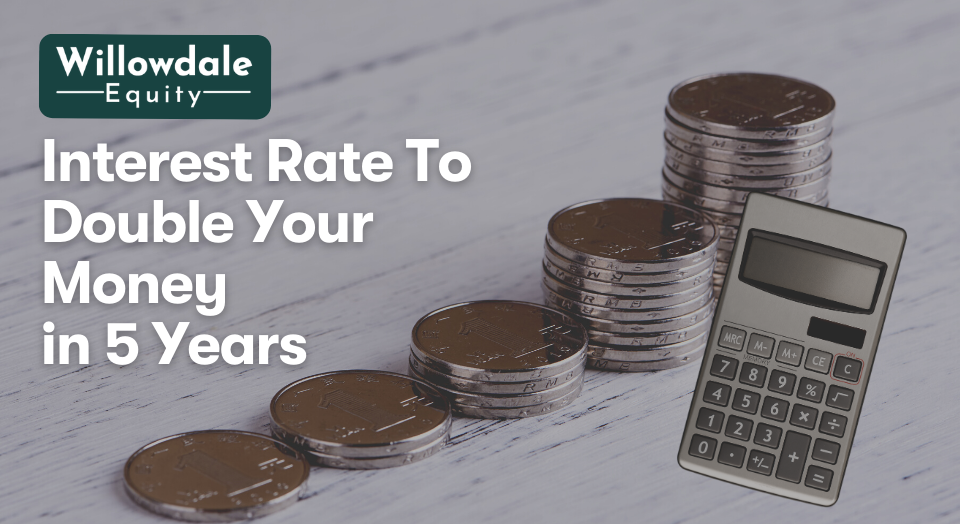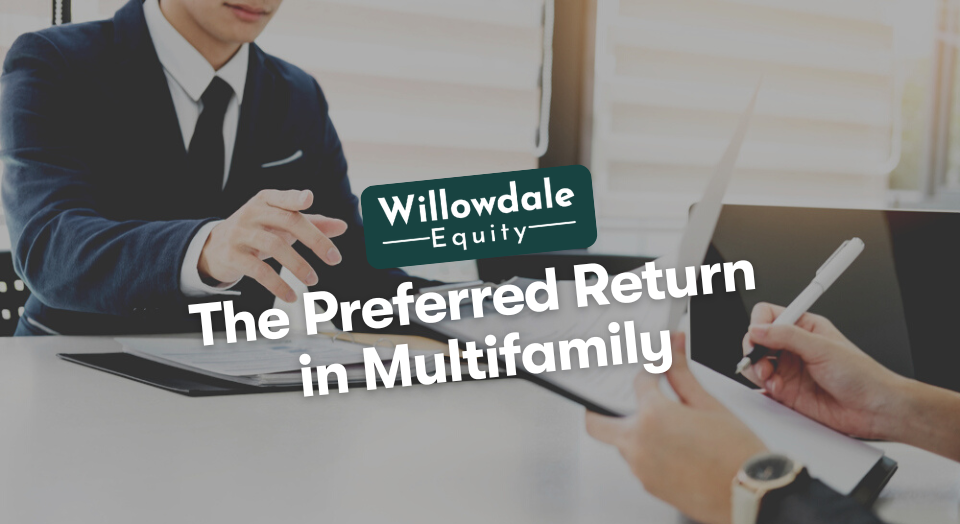
The CAP Rate Return On Investment: CAP Rate vs ROI, What’s The Difference?
This article is part of our guide on what a good cap rate is for multifamily, available here.
The commercial real estate market is expanding rapidly. However, there are several things you need to be aware of as a new investor in the sector.
Cap rate and ROI are the two most helpful financial parameters that real estate investors frequently use to project the prospective viability and gain on a rental property.
Property investments are unquestionably advantageous, but only if you know how to interpret the numbers. Considering an investment property’s potential cap rate and ROI are two ways to ensure that.
So, what do these two calculations entail, what are their similarities and differences, and how can we use them to make sound real estate investment decisions? We reveal it all in this guide.
Key Takeaways
-
The cap rate is the most crucial financial statistic used by commercial real estate investors to determine the anticipated rate of return from a property if they were to pay all cash for it. The cap rate is also the formula used to formulate values in commercial real estate.
-
One of the ways to measure returns in a real estate investment is by calculating the return on investment (ROI). It is the return on the cash you contributed to a particular real estate deal.
-
The ROI considers the return generated on your cash over a certain period, while the cap rate calculates what yield is in place and what the asset’s value is based on its yield.
What is a CAP Rate in Real Estate Investing?
The cap rate is the most crucial financial statistic used by commercial real estate investors to determine the anticipated rate of return from a property if they were to pay all cash for it. The cap rate is also the formula used to formulate values in commercial real estate.
Here is the Cap Rate formula:
Cap Rate= NOI/Value of Property
When choosing which rental property to buy, it’s a good idea to compare similar properties using the cap rate. By looking at the cap rate, you can determine what kind of cash flow it can produce in its current condition.
The cap rate should only be used to compare comparable properties in the same local market. It’s not a reliable indicator when comparing different asset types in the same market since net operating income (NOI) and property values will differ significantly.
Furthermore, the cap rates of different apartments in different markets are also not advised. The cap rate is impacted by many variables, such as the property type, size, in-place rents, amenities, supply and demand, and tenant demographics, to name a few.
Example Using the CAP Rate to Find the NOI
Let’s say we’re analyzing a prospective apartment complex, and all we know is that the property is being marketed for $5,000,000 and has an in-place cap rate of 6%. To find the in-place yield or NOI, we would perform the calculation as follows:
($5,000,000 Purchase Price x 0.06 cap rate= $300,000 NOI)
Example Using the CAP Rate to Find the Property Value
Let’s say we’re flirting with the idea of selling your apartment complex that currently generates $300,000 of NOI. In the market where the property is located, similar apartments are trading for and 6% cap. To find the market value of your apartment complex, we would perform the calculation as follows:
($300,000 of NOI / 0.06 cap rate= $5,000,000 NOI)
With the cap rate understood, let’s move on to ROI in real estate investing and how it is calculated.
What is ROI in Real Estate Investing?

One of the ways to measure returns in a real estate investment is by calculating the return on investment (ROI). It is the return on the cash you contributed to a particular real estate deal. Generally speaking, increasing debt can boost ROI; nevertheless, it is essential to note that excessive leverage can be harmful.
The ROI calculation formula is as follows:
ROI=Your Return/Total Investment
The return on investment (ROI) is your gain on the amount of money you spend on an investment property, including the down payment and some other soft costs.
The anticipated annual gain on the investment property, given your upfront outlay, is indicated by the ROI calculation. ROI incorporates all liabilities, including mortgage payments, in contrast to the cap rate method.
ROI enables you to comprehend how various investment amounts may impact your return.
ROI Calculator
Below is an ROI calculator. Simply input the desired numbers and click “Calculate” when your finished.
Example Using ROI
Here is an illustration to help you comprehend ROI better. You invested $100,000 and held that project for seven years. For the first six years, the property generated $20,000 per year, then when you sold the property in year seven, you received $180,000.
You would calculate the ROI as follows ($300,000 in returns / $100,000 investment = 3 X 100= 300%). Let’s now compare the cap rate and ROI to find the similarities and differences between the two.
CAP Rate vs ROI (CAP Rate Return on Investment)
The cap rate method and ROI measurement are crucial to evaluate the potential return on a rental investment property.
The capitalization rate demonstrates the value of a property concerning its expected rental income. However, the cap rate does not account for the impact of leverage. ROI takes into the actual dollar-for-dollar return on invested capital. For example, you can have radically different ROIs on the same property depending on the loan terms the borrower receives.
The similarities and differences between the cap rate and ROI are as follows:
Similarities
The most significant similarity is that both calculations are simple to perform. The ROI shows you the investment return over a specific period. In contrast, the capitalization rate informs you what the yield from an income-producing property is today or what it should be.
Differences
The differences between capitalization rate and ROI are apparent. The cap rate calculation does not consider the debt service required to purchase the property; only the NOI is considered. The calculation is practical when comparing real estate assets because although debt markets are relatively consistent for most borrowers, each borrower will have their own set of terms which would affect their free cash flow after debt service.
Also, some buyers purchase all cash (although rare), so evaluating assets based on what income is coming in and what operating expenses are going out is universal and not subject to variability in debt terms.
The ROI considers the return generated on your cash over a certain period, while the cap rate calculates what yield is in place and what the asset’s value is based on its yield.
With the similarities and differences between cap rate and ROI understood, let’s look at when each calculation should be used.
When Would I Use the Capitalization Rate Calculation?

The cap rate is most helpful in real estate investing when you acquire a property, recapitalize the property, and when you sell the property. For instance, when you’re acquiring the property, it tells you how much yield or cash flow you can expect when you take over the property and if you overpaid for it based on what cap rates properties in that local market are trading for. When you recapitalize the deal or refinance, the lower the cap rate, the more value you will be given from an appraisal, which could make or break a successful refinance.
On the sale of the property, the next buyer is fundamentally purchasing a yield. Depending on the type of property, its location, the market, and many other factors, they are willing to accept a certain yield on takeover. As you can see, the capitalization rate helps us determine the yield and value in all three scenarios.
Related Read: CAP Rate And Discount Rate
When Would I Use The Return On Investment Calculation?
ROI can be used to narrow down possible commercial real estate acquisitions based on their profit likelihood. However, its primary use is to establish what return you’ll achieve on investment capital.
As leverage makes up most of a real estate purchase, the remaining capital needed to close, plus some cash reserves and closing costs, is where the ROI is calculated from. Therefore, this is the most paramount piece of information you are concerned with.
Frequently Asked Questions about CAP Rate vs. Rate of Return
IRR offers a comprehensive perspective of the total returns on the investment on an annual basis based on the time value of those returns. In contrast, cap rates provide a snapshot of a property’s value and yield at a specific time.
Generally speaking, a higher cap rate indicates more significant risk, whereas a lower cap rate indicates lesser risk but bigger profits. Nevertheless, 5 percent to 7 percent is regarded as an “acceptable” rate.
ROI vs. CAP Rate - Conclusion
Using the cap rate and the ROI calculations to gauge the quality of an investment opportunity and its future value is crucial to the success of your deal. For investors seeking risk-adjusted yield, these are the basics to understanding the current in-place cash flow, the cash flow post-stabilization, and what return your can expect to achieve for all the cash contributed to the deal.
Join the Investors Club here at Willowdale Equity to access strong ROI-producing private multifamily investment across the southeastern United States.
Interested In Learning More About PASSIVE Real Estate Investing In Multifamily Properties?
Get Access to the FREE 5 Day PASSIVE Real Estate Investing Crash Course.
In this video crash course, you’ll learn everything you need to know from A to Z
about passive investing in multifamily real estate.
We’ll cover topics like earned income vs passive income, the tax advantages, why multifamily, inflation, how syndications work, and much much more!





